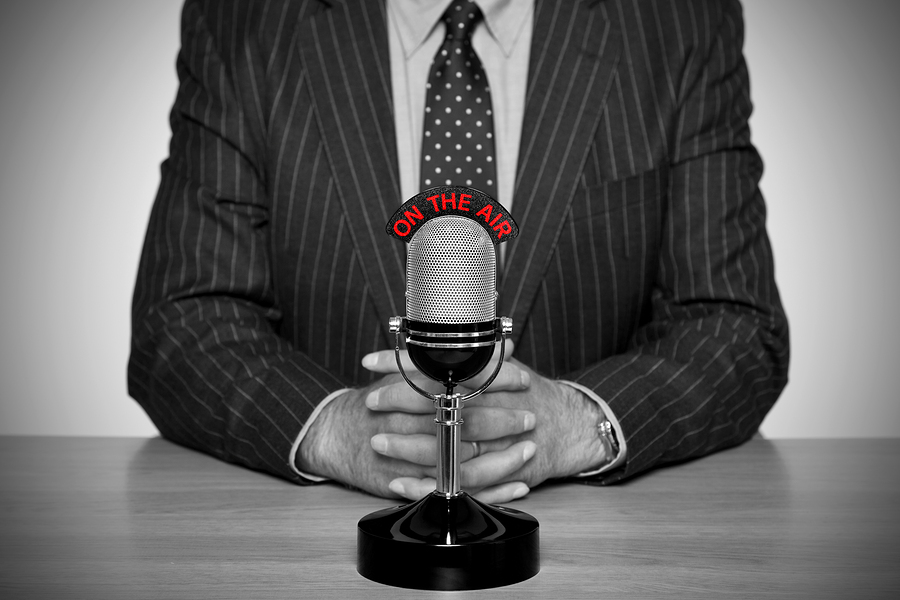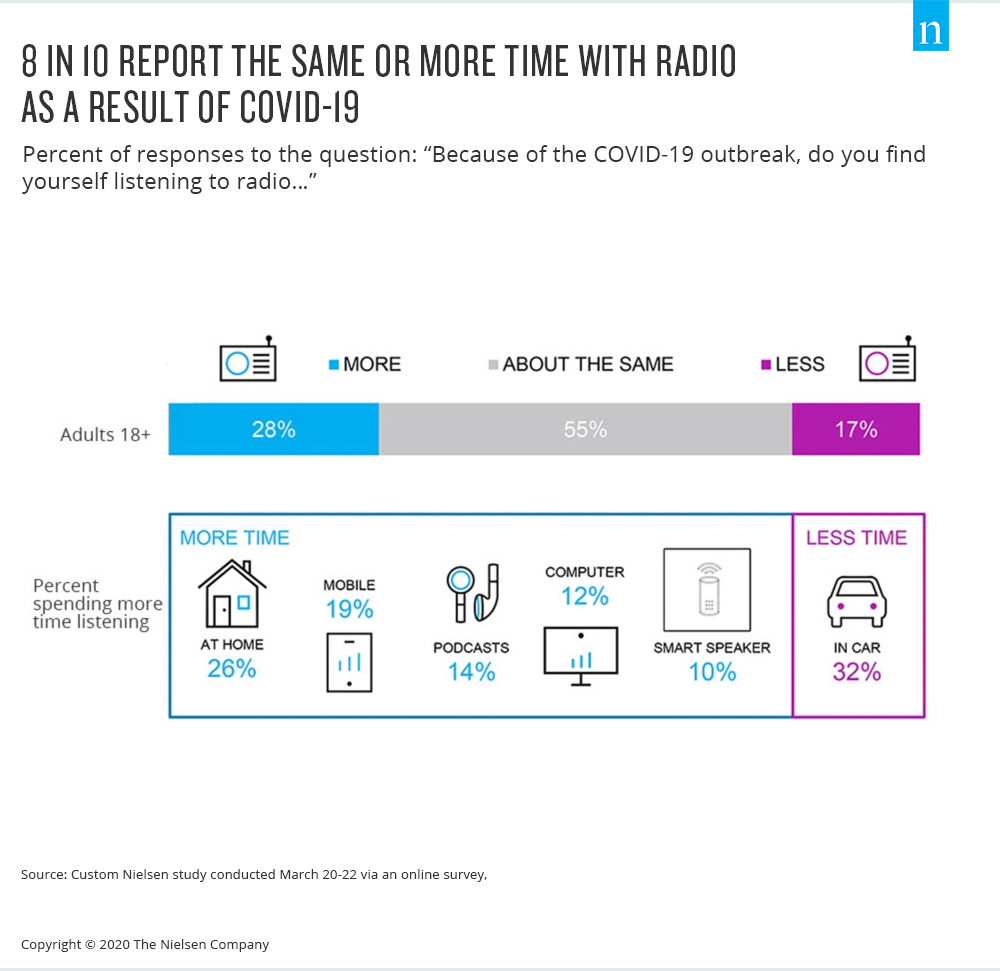Americans Hunkered Down at Home Turn to Radio — Just Differently

Among media, radio has long been Americans' trusted companion during good times and bad — and the current coronavirus (COVID-19) pandemic is no exception. Amid the current outbreak, eight in 10 Americans report spending the same or more time with radio as a result of COVID-19 to receive the latest news and information, Nielsen reports. What is changing, however, is how and where listeners are tuning in.
With Americans hunkered down at home and working remotely, their usual media routines have been upended. According to Nielsen's online survey of 1,000 adults (conducted between March 20 and March 22), while in-car radio usage is down, at-home listening jumped 26 percent. Rather than using just radios, however, audiences are connecting via digital devices, including 19 percent listening on smartphones, 12 percent on computers, and 10 percent on smart speakers.
These homebound listeners are device agnostic and will listen however they can, noted Tony Hereau, Nielsen's vice president of cross-platform insights. "That could be headphones, speakers, computers, and smartphones," he said. "It's linear audio content and it's the information that is helping [listeners] understand what's going on in their communities."
In a notable finding, young adults, who have largely moved away from radio in favor of digital streaming audio, are returning to AM/FM radio. Nielsen reported that listening during the survey period increased 35 percent among adults 18 to 24 years old and jumped 31 percent with adults 24 to 35 years old.

Overall, 92 percent of respondents said they were worried about the novel coronavirus and, since the survey, those concerns have likely deepened. For many listeners, local radio serves as both an important news source and an emotional salve. "Americans trust radio to keep them informed, connect them to their community, and help them deal with the outbreak," Hereau said.
Indeed, about half of the respondents said radio delivers the most accurate, updated information about the virus, as well as local closures and restrictions. That information can change daily, if not hourly, making radio a must-use media. Among listeners, 53 percent said AM/FM stations make them feel informed, and 46 percent said local radio provides important updates on what stores are open and where to shop.
In times like this, that strong bond between stations and listeners comes into focus. "Trust is not something you build overnight. It is built over years and maybe decades and that's why radio has such a strong connection to their communities," Hereau noted.
In that relationship, radio's beloved on-air personalities play an important role, and they can feel like friends or family. Listeners lean on those bonds: 46 percent of adults said local radio makes them feel connected to their community, while about four in 10 adults said it reduces feelings of loneliness and stress. As the virus's impact on the economy grows, 48 percent of listeners who are temporarily unemployed due to COVID-19 feel radio connects them to their communities, Nielsen reports.
At the same time, local businesses are also struggling to adapt. They're weathering interruptions and closures, while also trying to safeguard their employees' health and safety. The chaos might make advertising seem unnecessary or even inappropriate, but radio advertising is essential to keeping communities informed.
On radio, brands and businesses will find a receptive audience. Daily radio users are more inclined than the general population to be shopping for necessities, Nielsen reported. For example, three-quarters of daily radio users plan to shop for groceries in the next week, while about half plan to get gas and about 40 percent plan to order takeout from a local restaurant or shop at a local pharmacy.
Local businesses in these categories — as well as other essential services such as hardware stores, auto repair centers, and liquor stores — can use radio to communicate their store hours and any specials or restocked items, or to reach out with a calming, personal message for their community. It is important to stay in touch with customers.
"Some brands could lose market share if they clam up and their competitors are out there with messages," Hereau said.
With the pandemic showing no signs of abating, local radio will continue to play a critical role. "Whether it's for local news, a place to listen to what is happening, to connect with community members or simply as a way to find out which essential retailers are open for business," said Brad Kelly, managing director, Nielsen Audio, "radio is continuing to fill those needs for consumers everywhere."
Don't stop now! Stay in the know on audio/podcasting trends with more from Audio InSites and Alli Romano.
Click the social buttons to share this story with colleagues and friends.
The opinions expressed here are the author's views and do not necessarily represent the views of MediaVillage.com/MyersBizNet


